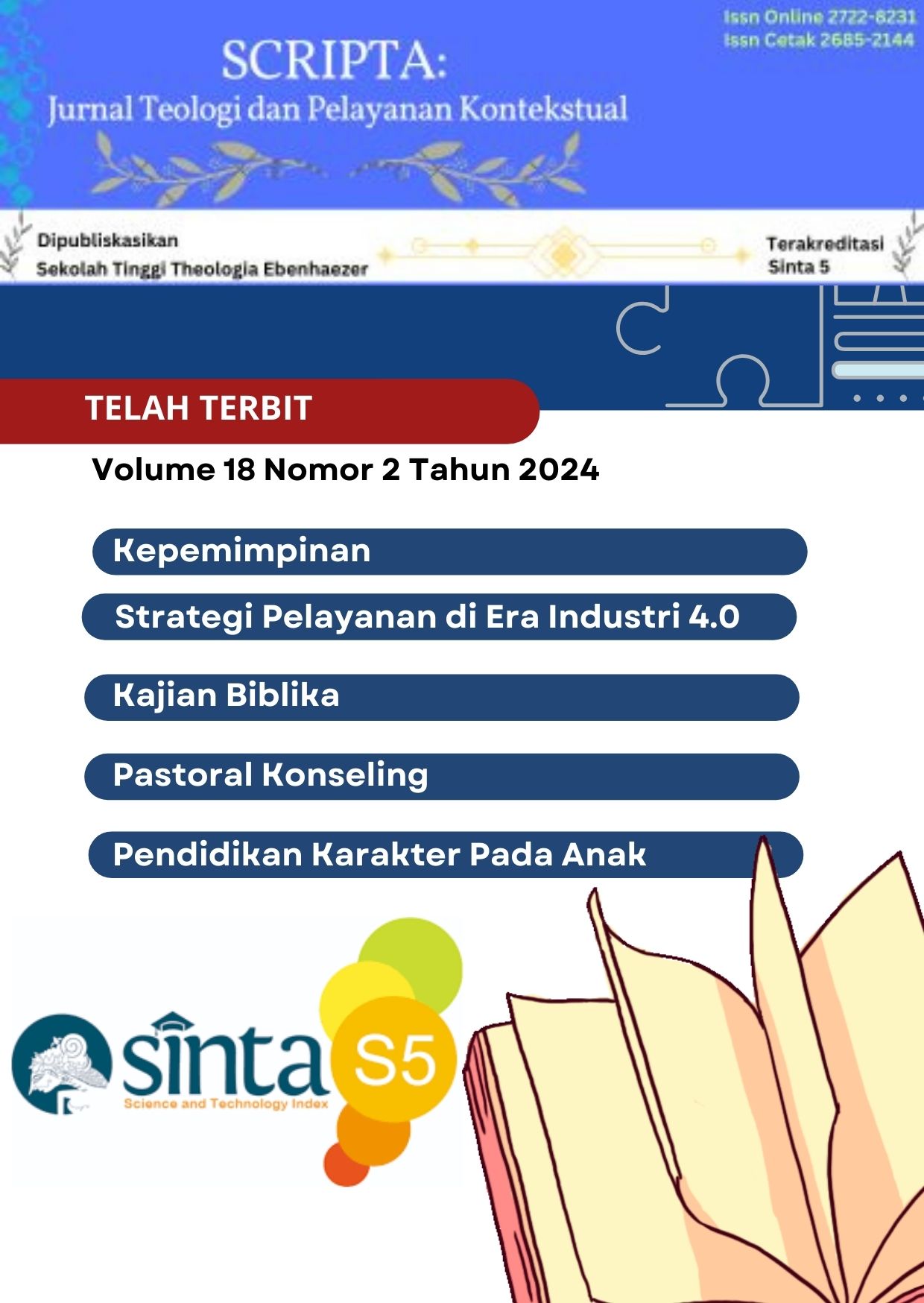Kemesiasan Yesus dan Kemesiasan Masa Intertestamentum: Sebuah Studi Analisis Komparatif
DOI:
https://doi.org/10.47154/sjtpk.v18i2.795Keywords:
Messiahship; Jesus; Intertestament; Comparative AnalysisAbstract
This paper is designed to provide a comparative analytical study of the messiahship of Jesus and the intertestamental messiahship. The messiahship of Jesus and the intertestament messiahship have intersections of similarities and differences that cannot be avoided. The concept of messiahship originates from the Hebrew Bible which has its roots in God's covenant with David. In the intertestament period, the concept of messiahship was characterized by the expectation of a leader who would bring political liberation to the Jewish nation. The intertestament messiahship appears in various texts such as 1 Enoch and the book of Jubilees. On the one hand, Jesus' messiahship emphasizes his function as the savior of mankind. Jesus' messiahship can be traced through the four gospels, the testimonies of the disciples and Paul's theological constructs. The messiahship of Jesus and the intertestamentary messiahship have in common the aspect of hope for a deliverer. However, the obvious difference is that the intertestamental messiahship focuses on the political aspect while Jesus' messiahship focuses on the theological aspect. Through a descriptive qualitative approach, the author will comparatively analyze the messiahship of Jesus and the intertestamental messiahship. The comparative analysis brings strengthening to the Christological aspects of the contemporary church today.
Published
How to Cite
Issue
Section
Copyright (c) 2024 03 Desember 2024

This work is licensed under a Creative Commons Attribution 4.0 International License.

SCRIPTURA: Jurnal Teologi dan Pelayanan Kontekstual is licensed under a Creative Commons Attribution-ShareAlike 4.0 International License.


















